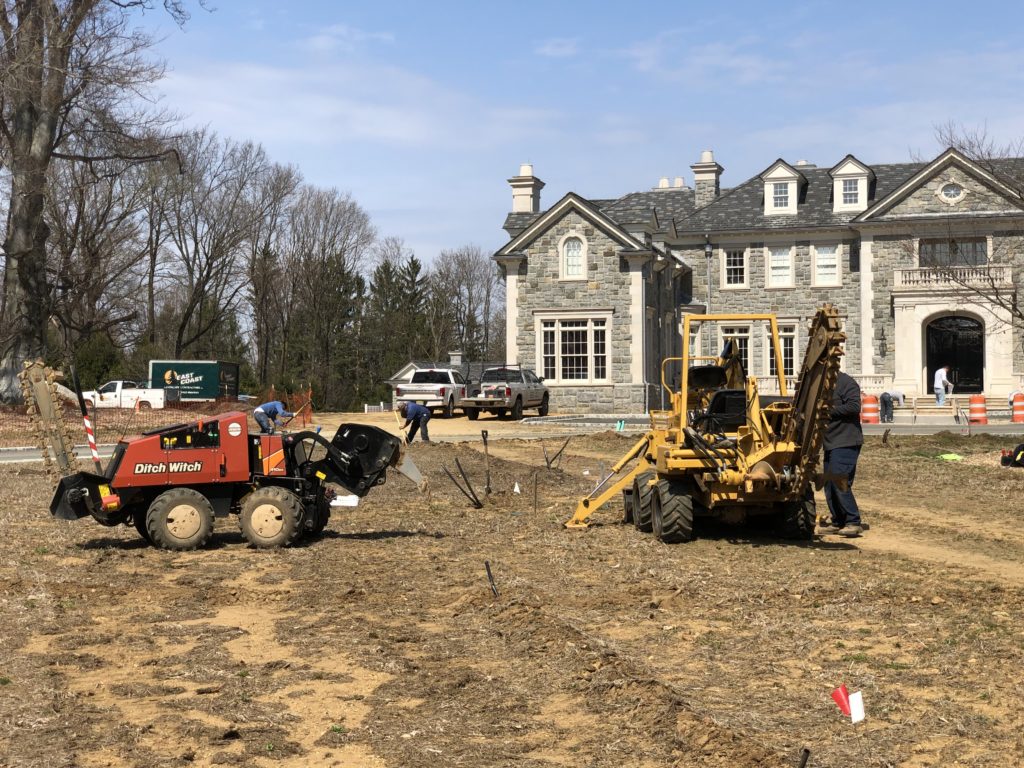
Winterizing Your Irrigation System
Winterizing Your Irrigation System; What You Need to Know
Winterizing your irrigation system is crucial to help it survive the winter without damage. And especially in areas where the temperature drops below freezing.
While it is possible to do this process alone, winterization does have its risks. The best idea is to trust a professional with your winterization process. Here we will go over a bit about the winterization process and how to protect your irrigation system.
Why do you need winterization?
Water expands a bit as it freezes. Anyone who has forgotten about a water bottle they put in the freezer knows this. As the bottle is likely warped and maybe even broken when you take it out.
The same basic principle applies to an irrigation system. Water that is left in the pipes can freeze and expand. Even small amounts of water left in common irrigation piping such as PVC can lead to damages. Breaks, and costly repairs.
Many professionals will use polyethylene pipes in colder climates to help prevent some cracking. This is because polyethylene is more flexible than PVC. So it may give a bit more and be resistant to frost. With that said, freezing water can still damage and rupture these pipes, making winterization important for everyone.
Types of winterization – Winterizing Your Irrigation System
There are three basic types of winterization methods, manual drain, auto drain, and blow out. Knowing the difference between them can save money and help keep you educated as to why a professional is recommending these services.
Manual drain – Winterizing Your Irrigation System
As the name suggests, the manual drain method involves draining out the irrigation piping by hand. This method works only if the manual valves are at the low points of the irrigation system and will effectively drain the entire system.
To perform a manual drain under these circumstances, turn off the irrigation system and water supply completely. Then open all manual drain valves. Once the water completely drains from these valves, open the waste valve and drain the water between the main line and backflow preventer.
If the sprinklers themselves have check valves, pull up each sprinkler to allow the water to drain from the sprinkler body itself and continue on out the piping.
Once all the water drains out, close off the manual drain valves. Keep in mind there may still be some water left in the pipes with this method.
Auto drain – Winterizing Your Irrigation System
An automatic drain is right for people with automatic drain valves at the ending low points in their irrigation system.
To perform an auto drain, turn the irrigation system off completely. Activate one station or sprinkler to drain the water in the pipes. The automatic valves should automatically open when the water pressure falls below 10 PSI, thus draining the whole system.
You’ll still have to open the waste valve and drain the water between the main shut off line and backflow preventer with this method. Again if your sprinklers have check valves in them you’ll need to pull up on each to drain the water into the piping.
There may still be some water left in the system with this method, even when doing it correctly.
Blow out – Winterizing Your Irrigation System
The blow out method of winterization is the most effective, but carries its own risks. It is best to call a professional to have them perform the blowout, as safety precautions have to be taken to avoid injury.
The blow out method involves pushing compressed air through the system to literally blow out as much water as possible. Using an air compressor with up to 100 CFM for 2 inch mainlines and anything thinner, the compressor is hooked to the irrigation system.
Completely turn off the irrigation system, including shutting off water supply. The compressor gets attached to the mainline after the backflow device. Never blow compressed air through the backflow device. Close the backflow valves.
Activate a sprinkler station that is farthest from the compressor and highest in elevation. Very slowly open the valve on the compressor, which will gradually force air into the system. This air will force the water out of the system through the activated sprinklers.
The pressure should be kept lower than the maximum operating pressure of the system, and should never go above 80 PSI for PVC and 50 PSI for PE.
Activate each station, from the furthest away and highest in elevation, working down to the closest and lowest in elevation, repeating this process. Each station should be blown out until no more water comes from the heads, about 3 minutes. Once the pipe is dry, move on to the next section to avoid damage to the pipes form compressed air.
Only the basics
This post covers the basics of winterizing your irrigation system, but each system is different. Your specific needs will change based on the type of equipment you have.
The best idea is to call the professionals and have them walk you through the specific winterization process for your system.
